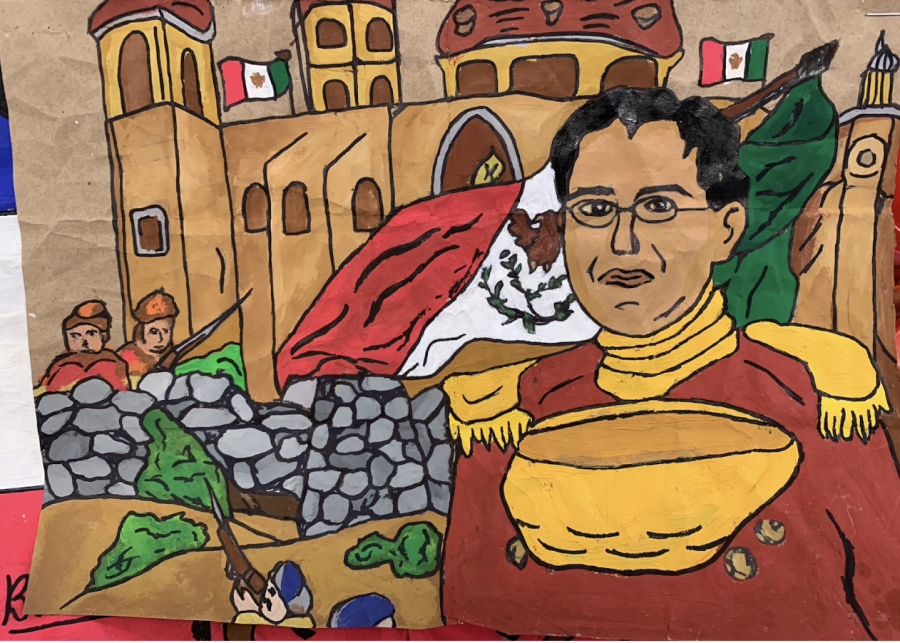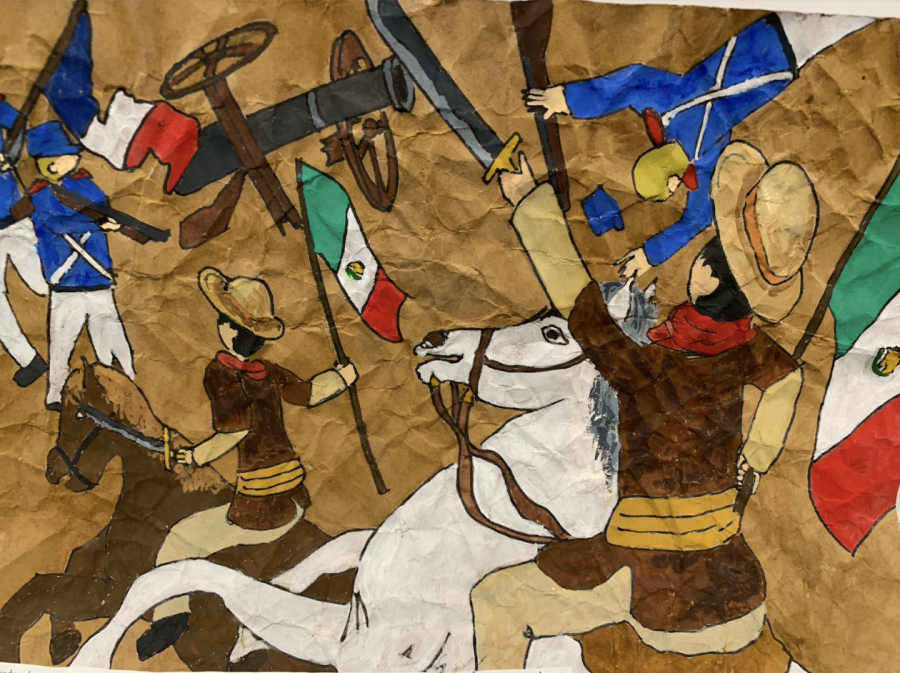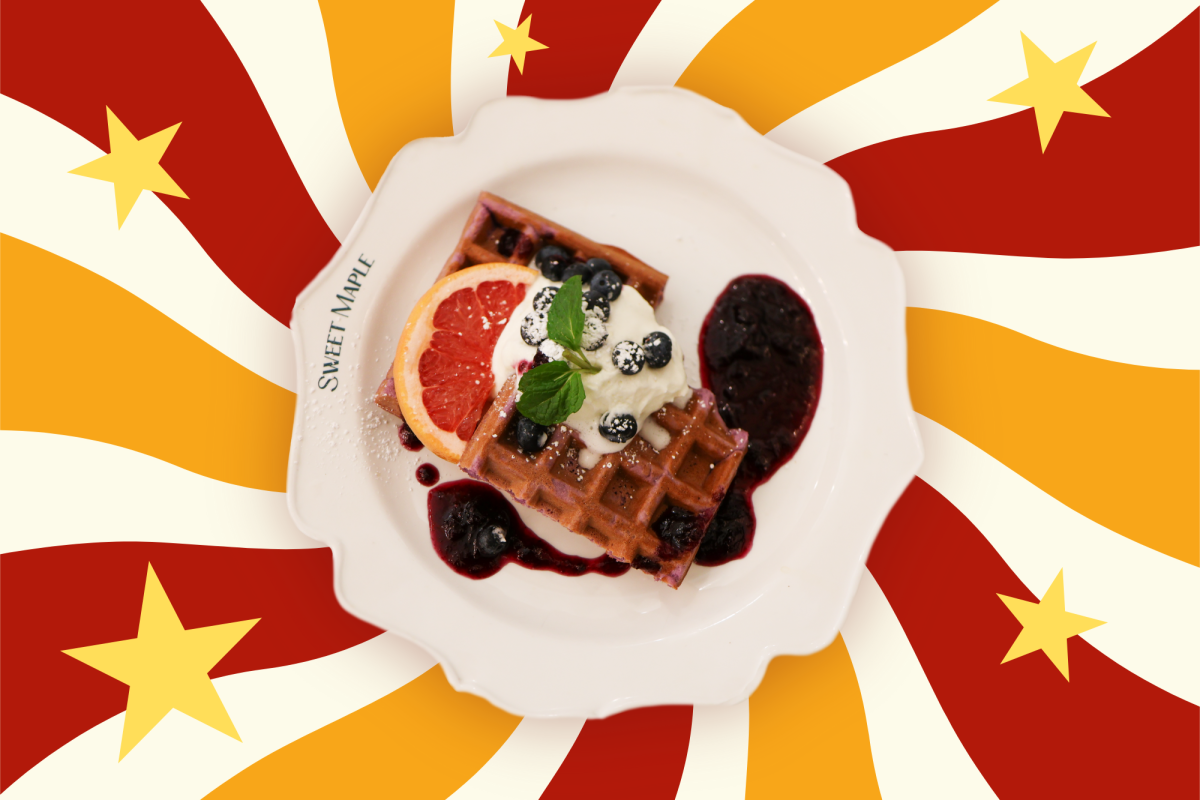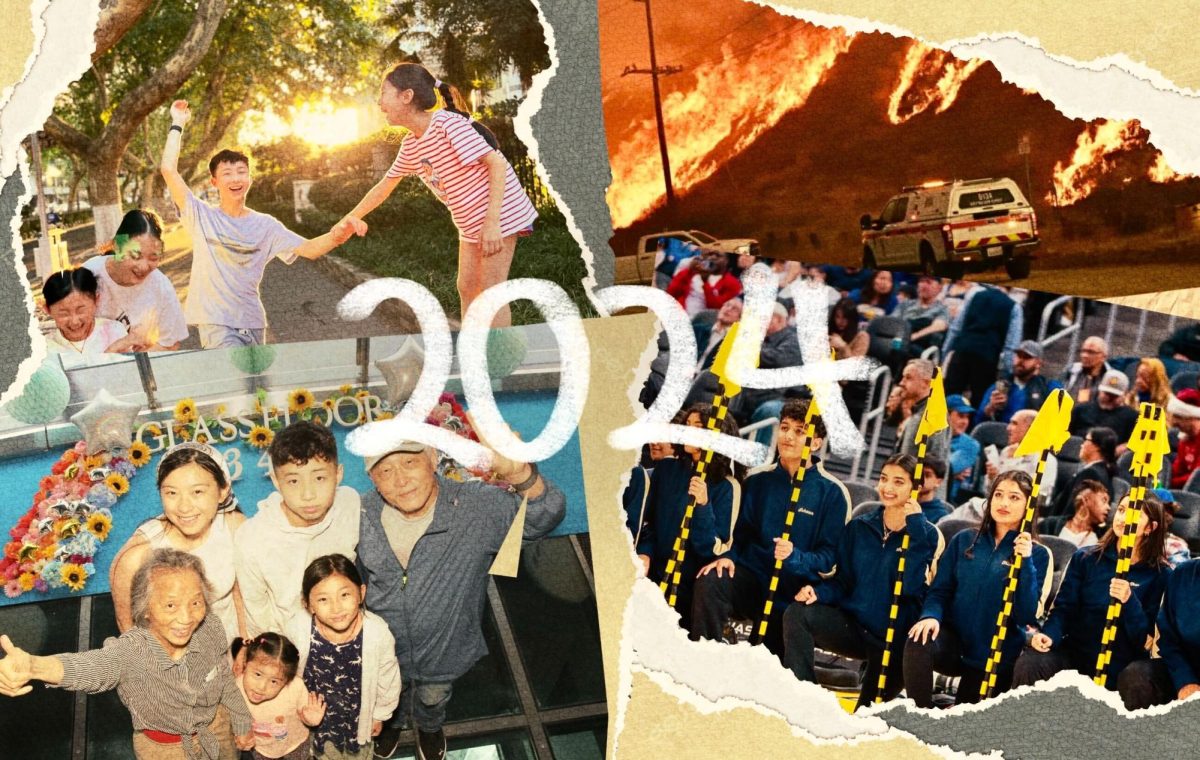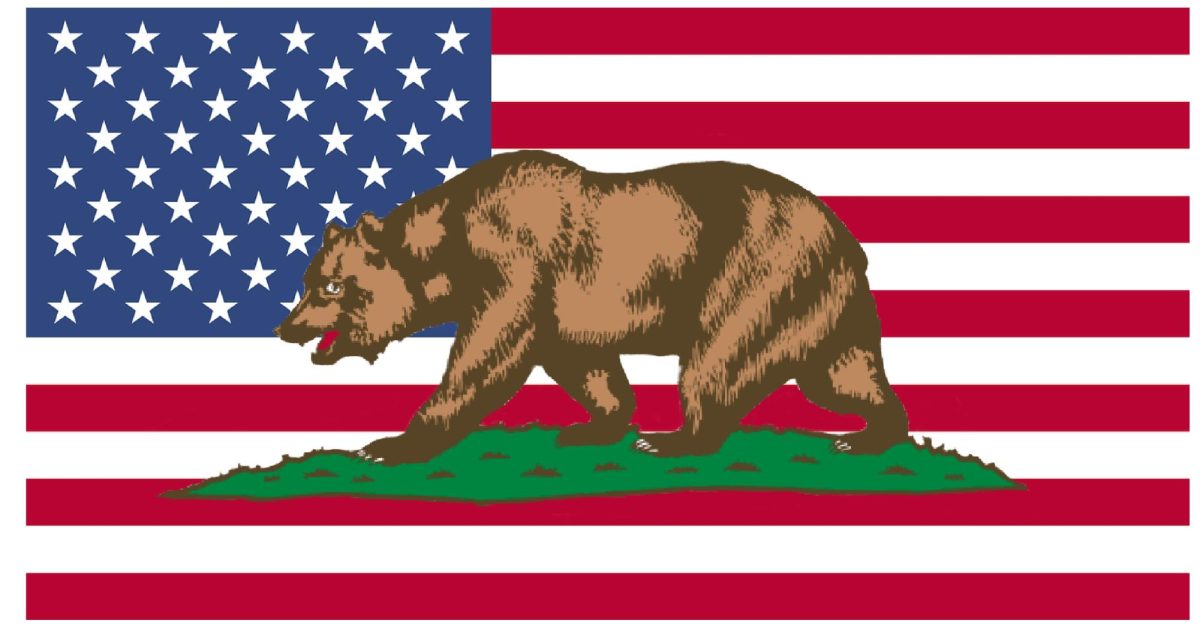Spanish classes celebrate Cinco de Mayo
MVHS Spanish classes participate in activities such as bark paintings and Mexican songs
Photo courtesy of Nishika Gorla
Canvas paper bark painting of General Ignacio Zaragoza, who led Mexican troops to victory in the Battle of Puebla
May 5, 2023
Held on May 5, Cinco de Mayo is an annual celebration of the 1862 Mexican victory over French forces at the Battle of Puebla. Despite the Mexican Army being outnumbered, Mexicans under General Ignacio Zaragoza pushed back the French army, providing a significant morale boost for Mexico. To celebrate this victory, people gather on this day for festive parades, mariachi music and wear bright colored traditional clothing.
MVHS Spanish classes celebrated Cinco de Mayo by participating in various class activities such as art and music to commemorate the holiday. Spanish teacher Maria Autran and her Spanish 3 classes used cut paper bags as canvases to mimic bark paintings. She also showed her students samples of bark paintings illustrating the Battle of Puebla for inspiration.
“[Bark painting] is a technique that was used in pre-colonial times,” Autran said. “The Mayans or the Aztecs would do this kind of painting, so that’s one of the reasons why we do it — [we are] imitating some type of art that is part of the culture.”
Autran states the importance of understanding that the holiday is celebrated differently in Mexico and should not be confused with Mexican Independence. She says that while there are gatherings of friends with food and drink in the U.S., in Mexico, people just acknowledge the importance of the event.
“I don’t know what originated the celebration of Cinco de Mayo in this country,” Autran said. “My guess is that [it gives a] voice to [Mexican people], gathering Spanish speaking people from all over.”
However, Autran doesn’t simply introduce the holiday to her students. She uses the opportunity to explore the Mexican history and culture behind the holiday for her Spanish classes.
“I try to help students understand what is important about the celebration,” Autran said. “We celebrate our battle that brought pride to our people. They were fighting for the values of the nation.”


